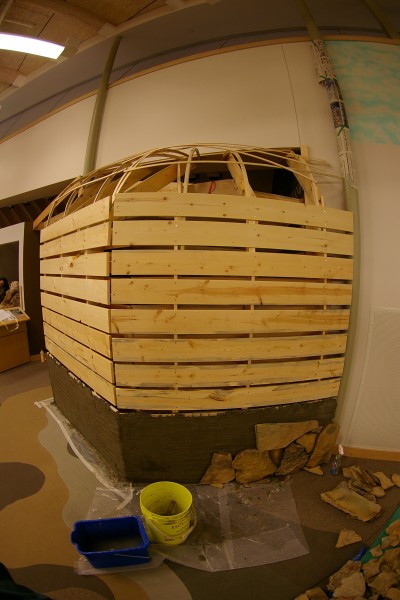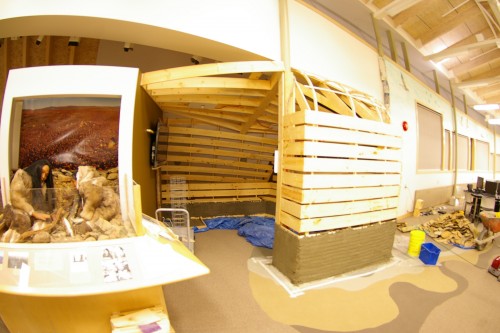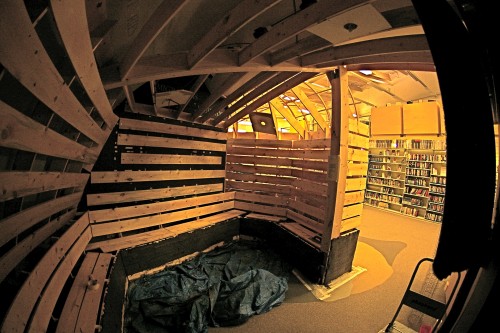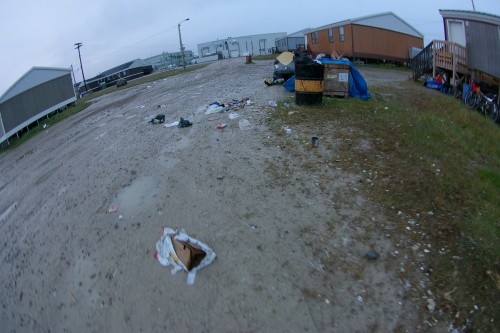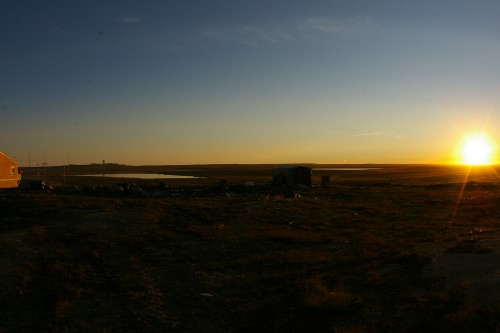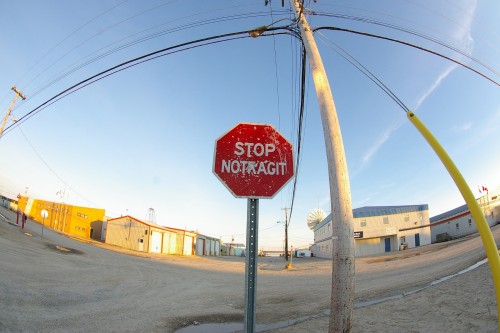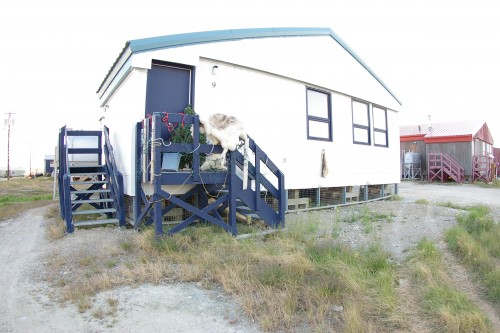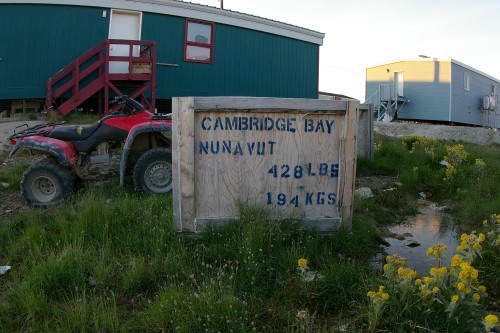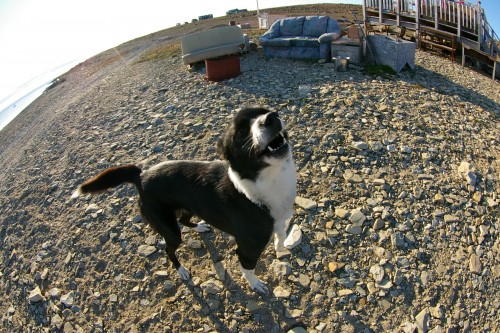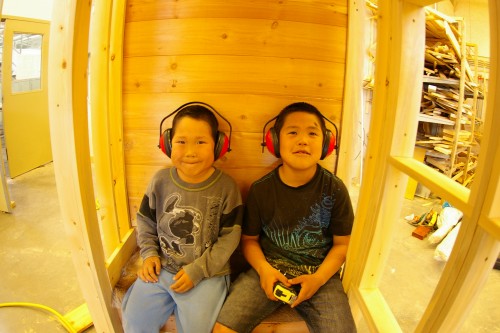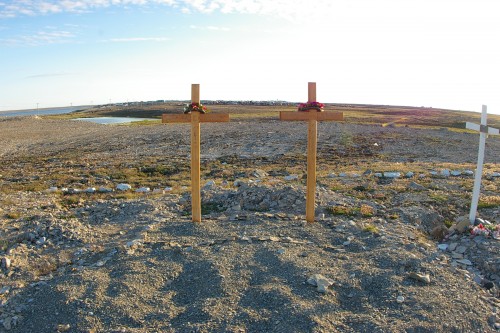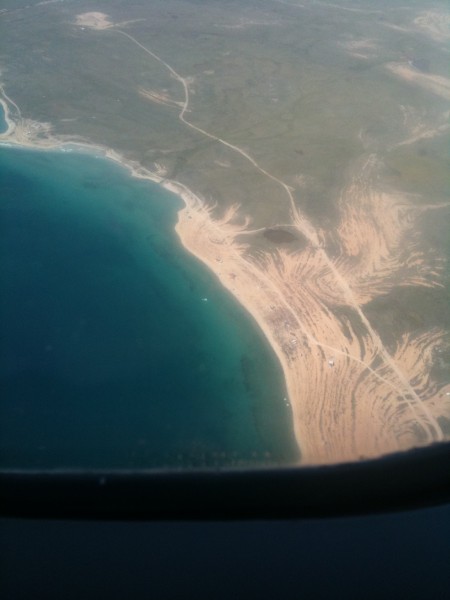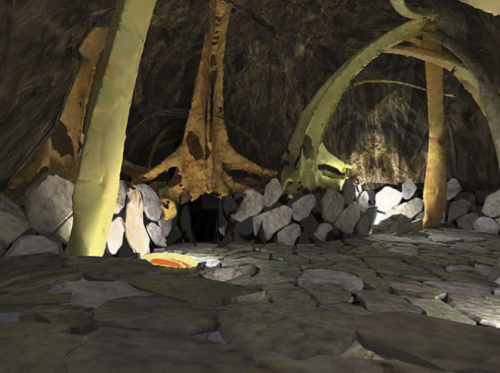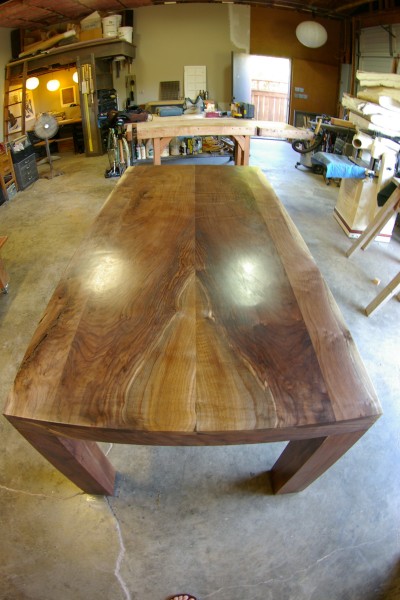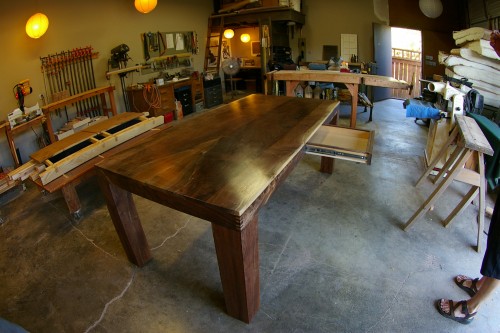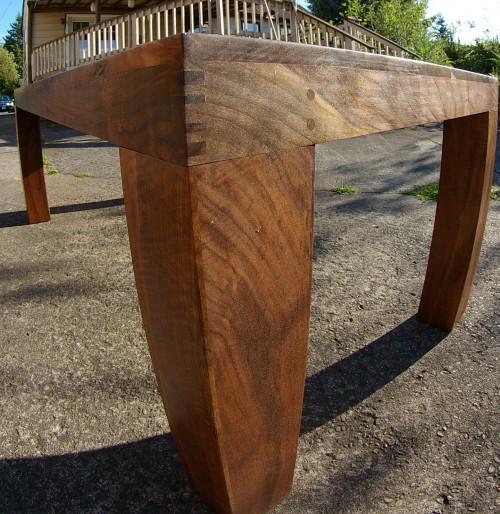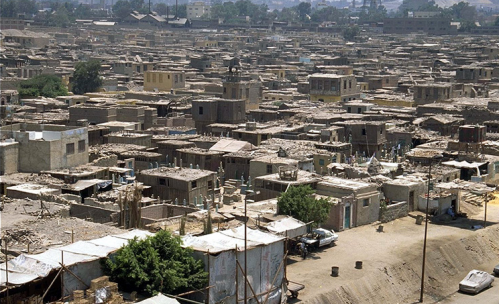The air raid siren just sounded, 10 PM. I learned this week that besides being set up for a missile defense warning system, it denotes the vestigial curfew time and internationally accepted noon lunch time. I like both as daily benchmarks or a synaesthetic occupant of one’s time… marking activities and weather from day to day, with sound. It has the added emotional heft of the real air raid alarm, that Wurlitzer mechanical fan winding up to pump air through a whistle sound that makes you want to run for cover. So it’s my second to last one here. Tonight it happened during my walk to the heritage center; I bought a fairly tough steak and couldn’t bring myself to eat it, so I prepared it for the two neighbor dogs, Missy and Dora.

We spent an 80 hour week getting every last little part of the qalgiq put together. I finished all final framing and wiring, put in three tortuous nights with arctic mortar and limestone shale. The elders, Mary, Annie and Mabel sewed the rest of the seal skin for the outside of the tupik. Only Mary speaks English to real effect… I think at this point the others are curious about it… but they have already succeeded in getting where they are, and can’t worry about really taking up anything like English. My favorite comment from Annie this week: we were kind of frantically getting things together and trying to explain dimensions to them for the tupik frame (it turns out they’re better marking all dimensions with a little pen mark on string–which is actually the most accurate) and I came into their sewing room and Annie looked at me and took a sip of coffee and said, “Lot’s a time.” I laughed at myself for a long time. I’m not sure if she finally meant that there is lots of time, that we have lots of time, or that the project would still take lots of time, which it did, relatively. We ended up pulling it together. There are 43 seal skins in the structure and upholstery of the interior, all hunted locally, fully consumed, tanned and cured. I don’t know anyone else with a theater quite like this:

All the skins are oriented with the head of the seal up. Many of the skins within the theater have the whole head intact with the beady eye holes and whiskers intact. All the flipper holes are very sensitively patched with a like seal fur from another skin. There are special stitches for the different parts of the seal, all sewn with floss.


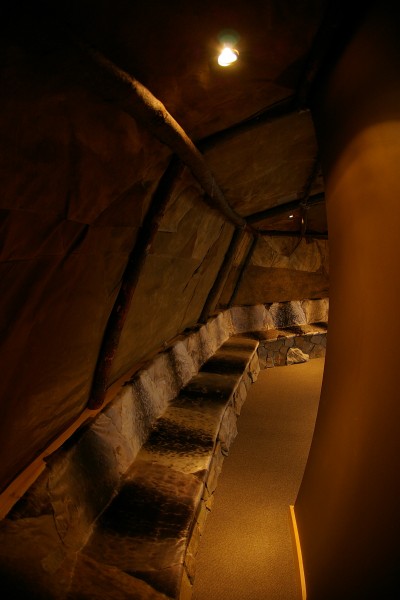
We ended up being unable to put in the earthen floor… which was probably a stroke of luck because it would have made the finish only more harrowing… I would be working right now if we were doing that part of the project. The carpet job in this heritage center is actually quite nice and we set up the exterior wall in part of the four color design and it leads a person into the large doorway of the theater which works nicely: a couple of shots from the outside:


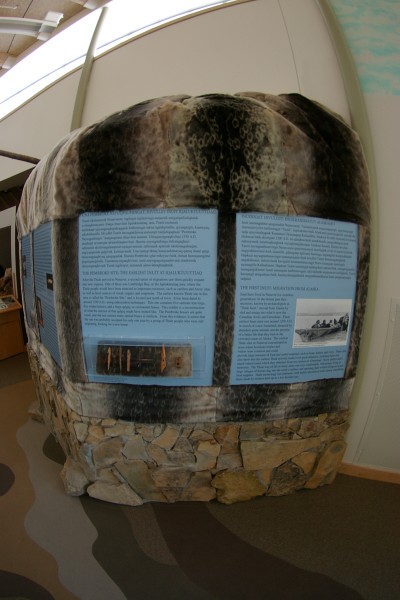

The name for this building is qagiq, pronounced something like “qual-ghik.” It is a kind of community gathering place. Some think it would have been mostly for men, to share about experiences in the field, hunting, to share with more youthful ones about successful means and methods of building hunting implements, to journey in the mind in spirit, and to relax and share. I have come to a few realizations about this building, about the people, about the outstanding meeting of two incredibly different worlds that are just now meeting one another.
I am trying to get my head around what’s going on here, in Cambridge Bay and in the Arctic North, in terms of the light speed changes that are happening here. It is not easy. The activity of making this ancient style of structure with Brendan and thinking about the way things were up here–and then watching people react to what we’re doing in their land, in their heritage center–is sort of surreal.
To put that expression into context: 65 years ago my grandfather was finishing up with WWII, the United States had just defeated Hitler, the world had refined a seemingly bullet proof method of industrial fabrication and international trade. The natives of all the participant nations were distant dreams (except the code talkers come to mind). Up here, the United States government was beginning to put in heavy duty radar stations and gear up to seriously watch the former U.S.S.R. for any possible nuclear missile launches. They built the Loran tower, the first major piece of communications infrastructure in Iqualuqtuqtiaq (Cambridge Bay, place of many fish). The first transition architecture was built from the crates that the Loran tower was delivered in. Along with it came cheap energy, packaged food, and alcohol. The Western Industrial Canon was inserted into the Inuit vein. Every year more materials for building and more food that could sit on a shelf showed up, and every year people moved ‘off the land.’ At that point they were capable of enjoying both things: they knew imminently well how to spear a seal, how to trap a fox… and what kind of crazy amazing thing was hot tea, canned oranges, and alcohol! (On one of the days we were on the land a few weeks ago, I was complaining about the clouds of mosquitos, exclaiming about the idiocy of them not reacting to my organic mosquito repellent, Brendan explained that these–huge–mosquitos have not tasted blood for 10 or 20 generations. They don’t give a shit about the balm you rubbed on your skin.) Think about the effect of alcohol on a people who have not had anything like this in their blood since they parted ways with Genghis Kahn. A people who drum with a shaman to listen to the spirit of a caribou tell them where to go. Alcohol has the false mask of taking you right to the front door. The appearance of the West in the North probably represents the most shocking cultural and social transition possible; more than the threat of Communism on Democracy, or Tyranny on Communism, or Feudalism on Villagers, or whatever: this transition was removing you from the land… not commercially traded and recorded land, the land.
In one generation, it is over. Every last native person comes to water. Every last Inuit is in a heated container of some sort (fascinating leaps in architecture), the able bodied are put to work building the radioactive DEW line, and the kids are shipped to residential school, beaten if they speak Inuinaqtun. In one generation our culture was able to effectively shake the language and way of life out of an entire people, as old as time. Now, my parents’ generation (up here) are the fruit of residential school, and their children do not understand their grandparents… and the grandparents don’t completely understand the grand children. An ATV is pretty cool to anyone; that’s perhaps the difference between the “West” and crack cocaine. Moving along the tundra on a badass ATV or Skidoo is really effective, that’s why it’s so acceptable. But the language is disappearing and the hunting technology is extinct. What’s impressive to me is that these women who are working with us to sew this seal skin tent (an archaeological fact) knew this way of life. It’s not just a story.
So when we asked the elders about what it would have looked like, or how the skins would have been oriented, they kind of scratched their heads. One said, “Well, it wouldn’t have been inside.” Like, it just doesn’t compute that this thing would be placed indoors. So I ask myself, who is this for? This community is 95% native; this Heritage Center is for the community. Why are we building a replica of the old way that no one under the age of 65 understands… and those older are just baffled anyway?
I am in awe of how these people thought. Brendan was explaining to me a couple of the hunting mechanisms the other night. They pretty much ate anything that moved. There was hunting trick called something like a ‘gull bomb.’ They would take a piece of baleen, bend it in half and freeze it in a piece of meat… then throw the meat in the air for a gull to catch; as the meat thawed in the stomach of the gull, the baleen unfolds and pierces the stomach of the gull and it falls. There are similar tricks with foxes and wolves. In the winter, a seal hunter keeps a deep sea ice hole open and lures a seal with a piece of fish, harpoons the seal with a toggled harpoon (hanmiat, made of caribou bone often), the seal takes off and a tendon line is attached to the hanmiat, the hunter lets it out and then lets down an inflated balloon to slow the seal down. The seal will drag this balloon underwater and exhaust itself and die. The balloon is made of the stomach of a seal, sewn with a waterproof stitch. The seal dies with a piece of caribou wood in its lung, dragging an inflated stomach exactly similar to its own. The inflated seal stomach is called avotaq. The old circle of technology is extremely closed. A caribou is killed with an arrow fashioned from caribou bone, and whilst you make it, you wear it.
Now the technology of this place is schizophrenic. People are curious about the old ways. The kids are in some way proud of the old ways. They are also enamoured of the West. A Skidoo that goes 70 miles an hour on the sea is pretty cool. The construction of the qalgiq has brought me to realize… I have not participated in making a qalgiq, but have further enunciated the bifurcation of these two worlds. We have made a replica. Of course it is positive to aid the imagination and to bring youth into the presence of history. But what is it for? I am finally intent upon understanding how we can look back, get curious about those who went before us, come to an understanding, and then make a decision to actually enhance our own lives. I am guessing that there is no better feeling than spearing a seal, using extreme acumen to bring home one of these magnificent animals in -60 degrees Farenheit, knowing your family will feast, the lamp will stay lit, a little suit will be made for your daughter, and your heart will beat, lungs expand, eyes blink, and it will happen again tomorrow. That feeling is good. Where is it now?
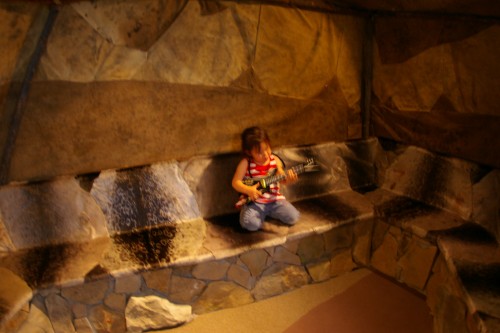
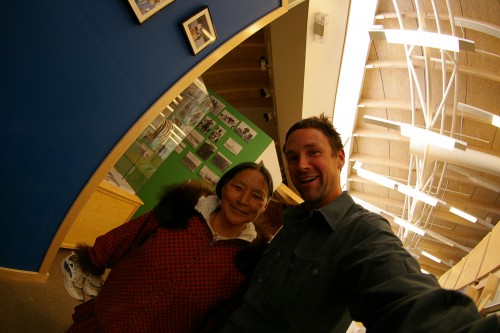
That’s Mary Avolak. I think she’s about 70… she doesn’t quite know: she says she “doesn’t count time the way you do.” Her husband worked on the DEW line many years ago. He long passed away, she thinks from cancer he acquired doing his job. Last night we hiked about five miles out of town to have supper and tea with her. She has a “cabin” out of town along the sea where people fish and party and rip around on their ATVs. It’s possible to stand in the cabin only if you’re situated in the center of the building, otherwise it’s a sitting room (standing for Mary), fully equipped with beautiful old cooking utensils, tin cups and bowls, enameled pots, a pot bellied stove, plywood walls, and a cozy bed in the back. She fixed caribou porridge. It was the most real wild life affirming thing I have tasted in a long time. When you look at her you are looking at the face of someone stranded in tradition, left behind in an old way, where a whole family lived in a small room, and hunting, sewing, loving and laughing were the only form of wealth.



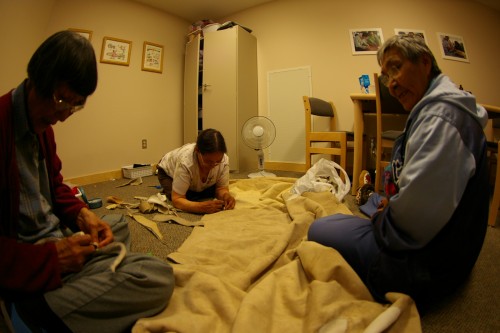 .
.


